Problem:
How to represent the fact that the robot can move around ?
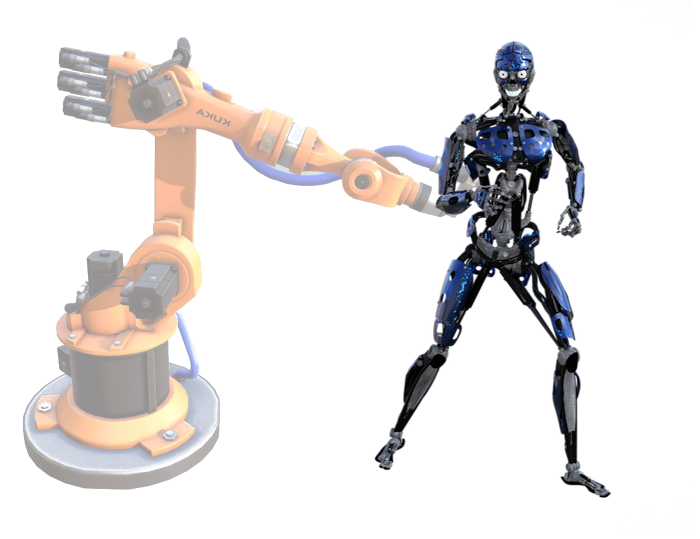
Solution:
Adding 6 virtual degrees of freedom; we call them the floating-base.

In practice, robot geometry and dynamic properties can be represented in a robot description format.
Most popular are SDF and URDF.

Defining tasks
Task:
A task is an errorthat you want to take to .
Example: Position task
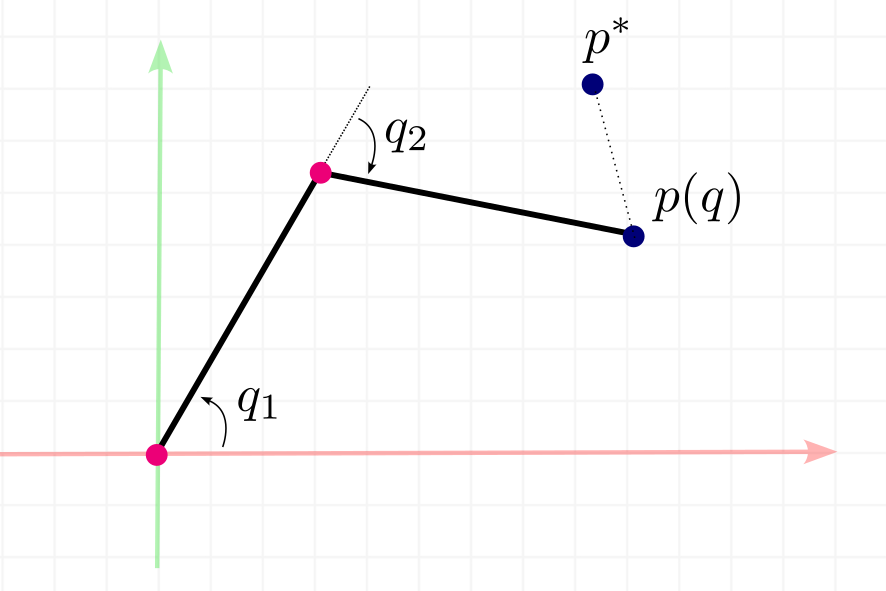
Example: Orientation task
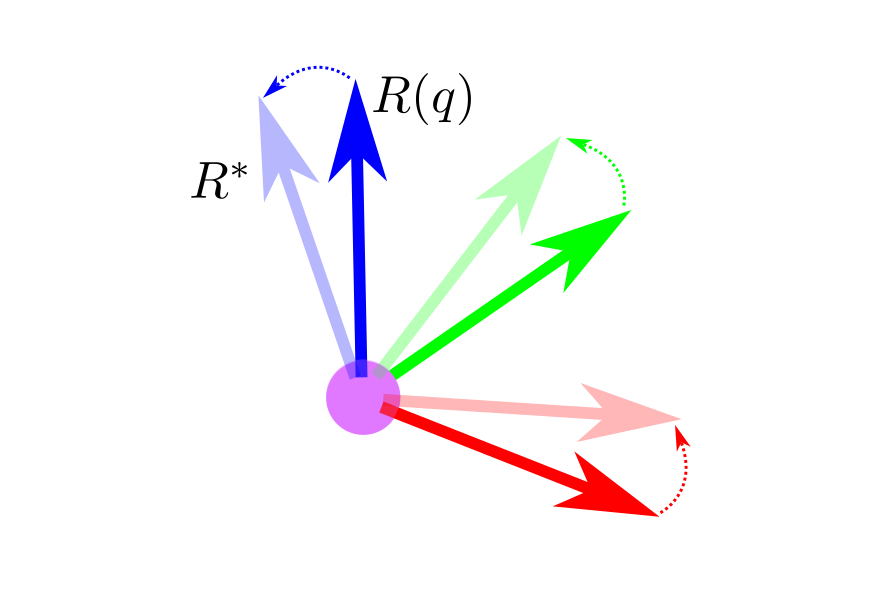
Combining tasks
We can combine multiple tasks in one equation:
Inverse Kinematics
We want to solve
for .
With a position task:
Need an expression for
Numerical approach
Consider the (first-order) approximation of
We can now solve the approximated:

This method is called the Newton-Raphson method
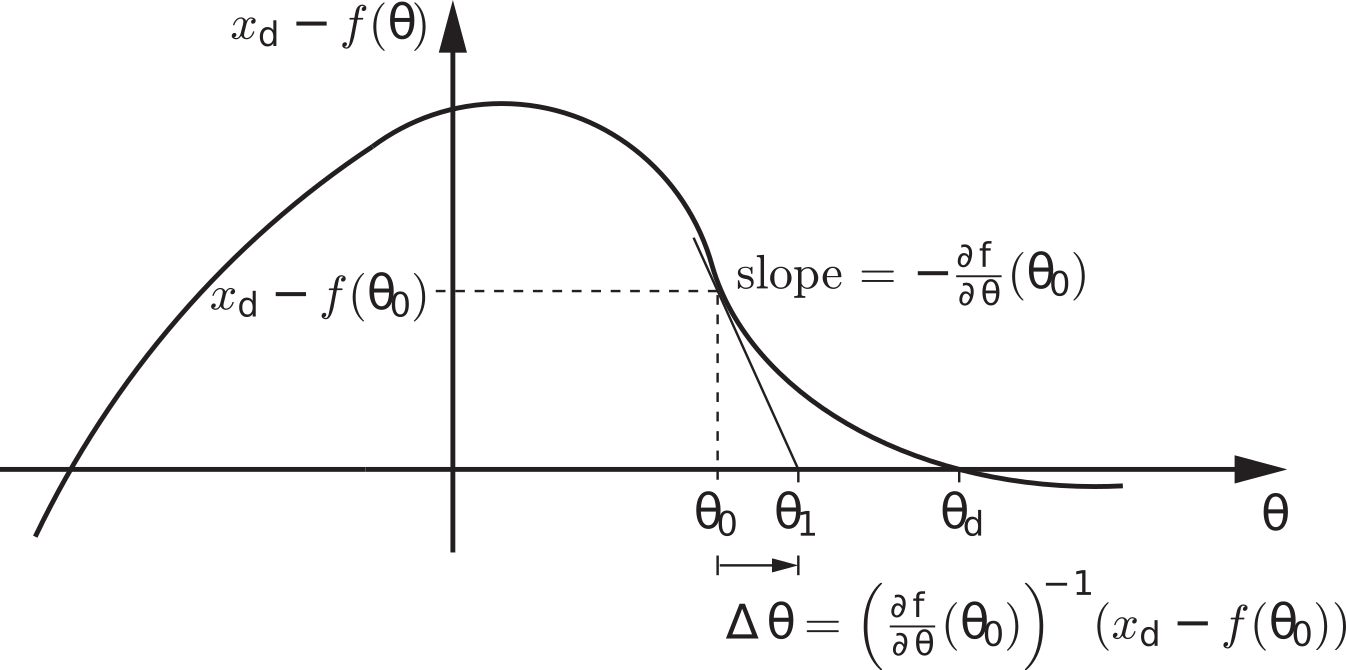
What if
is not square, or not invertible?
System can be:
- not enough rows: Underconstrained
There are infinite solutions to the equation, - too many rows: Overconstrained
The equation can't be solved at all, - rank-deficient: Singular
We need to replace equation solving with score minimization.
Instead of:
We will solve:
This objective can be expanded to:
For minimizing, we need
(we need
We cancel its derivatives with respect to
Instead of
Moore-Penrose (pseudo)-inverse
This is not the proper and general way to compute the pseudo-inverse.
With numpy, you can use np.linalg.pinv
The pseudo-inverse gives you the best solution in the sense of least-square errors.
Remaining problems:
- Giving different "priorities" to different tasks?
- How can we handle constraints?
- Maximum joint velocities:
- Joint limits:
- Maximum joint velocities:
Quadratic Programming
Subject to:

Remember the score we wanted to minimize is:
Since
It is exactly equivalent to computing the pseudo-inverse

Joint velocity limits
Joint limits
Tasks "soft" priorization

Separately for each task
The objective function is then the sum of weighted sub-objectives:
Tasks "hard" priorization

Under-constrained problem
QP formulation requires
(
If we don't have enough objectives, this will not be the case.

It is equivalent to adding

QP problem
The problem can then be formulated as:
Where the superscript
Kinematics tasks we implemented
- Position task*,
- Orientation task*,
- Joint task,
- Axis-align task,
- Axis-plane task,
- Distance task,
- Center of mass task,
- Centroidal mometum task,
- Regularization task.
* Can be relative or absolute
In practice
Computing Jacobians can be done using Rigid Body algorithms library.

Let's make some squats!
First, we can create the solver, and add two tasks:
solver = robot.make_solver()
T_world_trunk = np.eye(4)
trunk_task = solver.add_frame_task("trunk", T_world_trunk)
trunk_task.configure("trunk_task", "soft", 1.0, 1.0)
solver.add_regularization_task(1e-6)
trunk_taskis a frame task (it packages both position and orientation task)regularization_taskis here to regularize the problem, because we have too many DoFs!
Then, we can update the trunk_task target in the main loop:
T_world_trunk[2, 3] = 0.25 + np.sin(t)*0.05
trunk_task.T_world_frame = T_world_trunk
qd = solver.solve(True)
We can now add a task for the left foot:
T_world_left = tf.translation((0., 0.055, 0.))
left_foot_task = solver.add_frame_task("left_foot", T_world_left)
left_foot_task.configure("left_foot_task", "soft", 1.0, 1.0)
And do the same for the right foot:
T_world_right = tf.translation((0., -0.055, 0.))
right_foot_task = solver.add_frame_task("right_foot", T_world_right)
right_foot_task.configure("right_foot_task", "soft", 1.0, 1.0)
Now, let's remove the trunk_task and add a com_task:
com_task = solver.add_com_task(np.array([0., 0., 0.]))
com_task.configure("com_task", "soft", 1.0)
com_task.target_world = np.array([0., 0., 0.3 + np.sin(t)*0.03])
We can add a trunk_orientation task:
trunk_orientation_task = solver.add_orientation_task("trunk", np.eye(3))
trunk_orientation_task.configure("trunk_task", "soft", 1.0)
We can now add a joints_task to impose target angles for the arms and the head:
joints_task = solver.add_joints_task()
joints_task.configure("joints", "soft", 1.0)
joints_task.set_joints({
"head_yaw": 0.,
"head_pitch": 0.,
"left_shoulder_pitch": 0.,
"left_shoulder_roll": 0.,
"left_elbow": -2.,
"right_shoulder_pitch": 0.,
"right_shoulder_roll": 0.,
"right_elbow": -2.,
})
Let's add some hand-made motion in the arms:
joints_task.set_joints({
"left_shoulder_pitch": np.sin(t*2.5)*0.5,
"right_shoulder_pitch": np.sin(t*2.5)*0.5,
})
Kicking using cubic spline and frame tasks:
Adding Centroidal Angular Momentum task to try to reduce the angular momentum:
Highly recommended reading
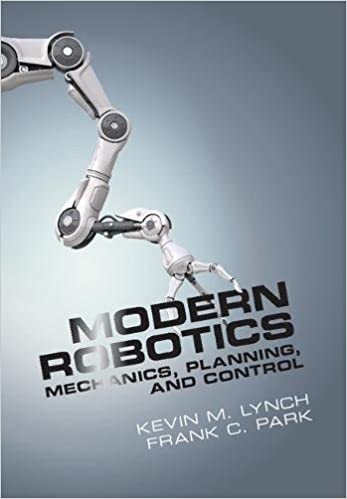
- Free PDF
- Good YouTube channel
 Questions ?
Questions ?